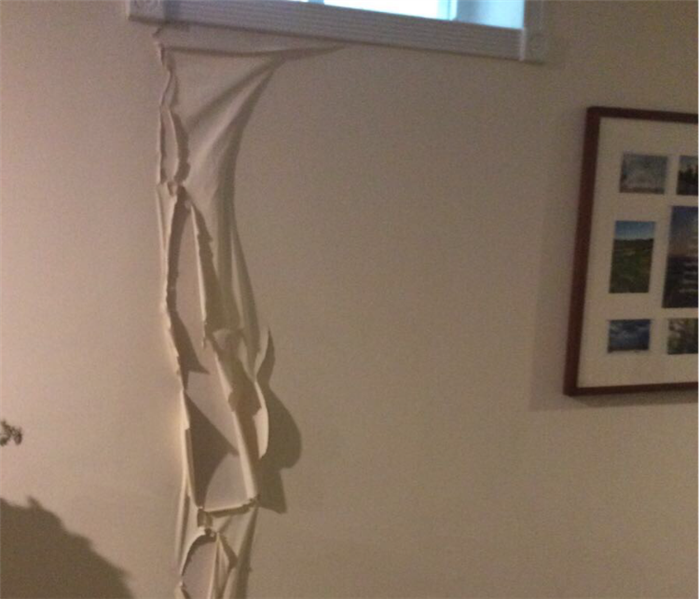A Simple Step-By-Step Guide for Dealing with Water Damage
9/17/2018 (Permalink)
It’s a homeowner’s nightmare: water damage. An extensive water problem in your home can feel overwhelming. Unfortunately, serious problems – like mold growth – can begin within 24 hours, so it’s important to assess your situation and act quickly.
If you’re staring at a pool of water in your home and wondering what to do next, here’s a guide to help you start getting everything back to normal.
Call for Professional Water Damage Restoration Services ASAP
The simple fact is, the quicker you bring in professional help, the better your chances of minimizing the long-term damages and costs.
Check Your Insurance Coverage
Once help is on the way, check your homeowner’s insurance to see if your water damage will be covered.
Typically, a sudden major flooding event (like bursting pipes) is more likely to be covered than a long slow leak. You’ll want to act fast in order to make a claim. It’s also a good idea to take photos to document the evidence.
SERVPRO of Eatontown/Long Branch can help you manage the insurance paperwork process – just ask!
Remove Any Items You Can
When you’re dealing with water damage, remember: safety first.
“Slip and fall” accidents and electrical hazards can be common in water damage situations, so only perform those clean-up activities you know to be safe.
If it is safe to do so, remove any items you can from the affected area. It’s a good idea to gather any loose items from the floor, especially colored rugs, or other colored materials that might leave a stain. Prioritize the removal of any valuables as well as any wet items like cushions or upholstery that can be taken out to dry.
Remember: water-logged materials can be very heavy, so make sure to be safe and handle them carefully!
Dry Out the Damaged Area
If it is safe, start drying out the wet area.
Mops and buckets can be useful to remove excess water quickly. Also wipe down any wood or porous objects that may be more sensitive to water damage. Open windows and doors to allow maximum air circulation.
Also, if you have access to electricity, run an air conditioner and/or fans on high and use a dehumidifier. While a wet-dry vac can be a useful tool to deal with minor flooding, NEVER use a vacuum cleaner to remove excess water.
Remember: if there are any electrical hazard concerns, do NOT attempt to use any appliances.
Disinfect Damaged Surfaces
Once you’ve removed excess water, you can start to disinfect the damaged area to clean-up and prevent further mold growth and other contamination.
A simple cleaning solution is one-part household bleach to one-part water. Just lightly spray and wipe down any affected non-porous surfaces.
SERVPRO of Eatontown/Long Branch is a locally owned and operated organization of highly trained technicians with the expertise and advanced technological equipment needed to clean-up and repair your water damage fast. We’re ready to respond to your emergency situation immediately, and we will oversee and document the entire process until your home is fully restored.





 24/7 Emergency Service
24/7 Emergency Service
